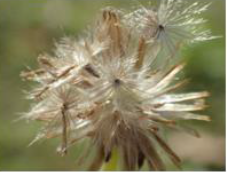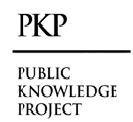Tridaxprocumbens: A comprehensive review of its botany, ethanomedicine, phytochemistry and pharmacological significance
Keywords:
Tridaxprocumbens, botany, ethanomedicine, phytochemistryAbstract
Tridaxprocumbens is a perennial herb of the Asteraceae family, popularly known as "Coat Buttons" or "Wild Daisy". The herb is utilized in a traditional medicine for the treatment of a variety of diseases such as fever, problems with your digestive system, and also wound healing. This research main aims to provide an in-depth examination of T. procumbens' botany, ethnomedicine, phytochemistry, and pharmacological usefulness. Different biological activities have been identified and documented for the plant phytochemicals components, which include alkaloid, flavonoid, carotenoid, saponins, and tannins. T. procumbens has been extensively examined and reported to have antihypertensive, antioxidant, anti-diabetic, anti-cancer, anti-bacterial, and wound-healing properties.This review discusses T. procumbens' potential as a useful source of natural compound for the development of a novel medications and treatments. Further research is needed to fully explore the therapeutic potential of this plant and to validate its traditional uses.
Downloads
References
Christudas S, Kulathivel T, Agastian P. Phytochemical and antibacterial studies of leaves of Tridaxprocumbens L. Asian Pacific Journal of Tropical Biomedicine. 2012 Jan;2(1):S159–61.
Kumar S, Prasad A, Iyer SV, Vaidya S. *Corresponding Author: Pharmacognostical, Phytochemical and Pharmacological Review on Tridaxprocumbens Linn [Internet]. 2020. Available from: https://www.researchgate.net/publication/339726066_Corresponding_Author_Pharmacognostical_Phytochemical_and_Pharmacological_Review_on_Tridax_procumbens_Linn
SivakumarThirumal, DeepaBalasubramanium. A review on Traditional and pharmocological application of Tridaxprocumbens L. ResearchGate [Internet]. 2023 Jul 13;17(7):758–67. Available from: https://www.researchgate.net/publication/372337164_A_review_on_Traditional_and_pharmocological_application_of_Tridax_procumbens_L
A Review on Tridaxprocumbens Linn. Asian Journal of Pharmacy and Technology [Internet]. 2018;8(3). Available from: https://www.indianjournals.com/ijor.aspx?target=ijor:ajpt&volume=8&issue=3&article=008
Andriana Y, Xuan T, Quy T, Minh T, Van T, Viet T. Antihyperuricemia, Antioxidant, and Antibacterial Activities of Tridaxprocumbens L. Foods. 2019 Jan 10;8(1):21.
Pareek H, Sharma S, Khajja BS, Jain K, Jain G. Evaluation of hypoglycemic and anti-hyperglycemic potential of Tridaxprocumbens (Linn.). BMC Complementary and Alternative Medicine. 2009 Nov 29;9(1).
AlMamunMdA, Islam K, AlamMdJ, Khatun A, Alam MM, Al-Bari MdAA, et al. Flavonoids isolated from Tridaxprocumbens (TPF) inhibit osteoclasts differentiation and bone resorption. Biological Research. 2015 Sep 12;48(1).
Al MamunMdA, AsimMdMH, SahinMdAZ, Al‐Bari MdAA. Flavonoids compounds from Tridaxprocumbens inhibit osteoclast differentiation by down‐regulating c‐Fos activation. Journal of Cellular and Molecular Medicine. 2020 Jan 9;24(4):2542–51.
Kumar L, Prasad A, Iyer S, Vaidya S. Pharmacognostical, phytochemical and pharmacological review on Tridaxprocumbens. International Journal of Pharmaceutical & Biological Archives. 2012; 3(4): 747 751
Musale AS, Bhandwakar SS, DhananjayGhodke, Nikam DB. A Phytochemical Constituents and Pharmacological Properties of plant Tridaxprocumbeans. Research journal of pharmacognosy and phytochemistry. 2023 Nov 9;288–92.
Chauhan BS, Johnson DE. Germination Ecology of Two Troublesome Asteraceae Species of Rainfed Rice: Siam Weed (Chromolaenaodorata) and Coat Buttons (Tridaxprocumbens). Weed Science. 2008 Aug;56(4):567–73.
Rogers S. Some Observations on the Reproduction of Tridaxprocumbens L. CYTOLOGIA. 1969;34(2):188–95.
Ingole VV, Mhaske PC, Katade SR. Phytochemistry and pharmacological aspects of Tridaxprocumbens (L.): A systematic and comprehensive review. Phytomedicine Plus. 2022 Feb;2(1):100199.
SP Kethamakka, Deogade MS. Jayantiveda (Tridaxprocumbens) - Unnoticed Medicinal plant by Ayurveda. 2014 Mar 10;2(1):6–20. Available from: https://www.researchgate.net/publication/260889475_Jayanti_veda_Tridax_procumbens_-_Unnoticed_Medicinal_plant_by_Ayurveda
Tridaxprocumbens [Internet]. Wikipedia. 2023. Available from: https://en.m.wikipedia.org/wiki/Tridax_procumbens
V. Bharathi, Kalavathi, A. ShanmugaPriya, S. JannathulFirdous. Anti-obesity effect of Tridaxprocumbens in atherogenic diet-induced obese rats.International Journal of Pharmacy and Technology [Internet]. 2011 Jan 1;3(1):1565–9. Available from: https://www.researchgate.net/publication/287849514_Anti-obesity_effect_of_Tridax_procumbens_in_atherogenic_diet-induced_obese_rats
Tridaxprocumbens (l.)- apharmacognostic screening | International Journal of Current Research [Internet]. Journalcra.com. 2024 [cited 2024 Dec 6]. Available from: https://www.journalcra.com/article/tridax-procumbens-l-pharmacognostic-screening
Adom A. TRIDAX PROCUMBENS INHIBITORY PROPERTIES OF ALPHA AMYLASE [Internet]. 2019. Available from: https://www.researchgate.net/publication/344132239_TRIDAX_PROCUMBENS_INHIBITORY_PROPERTIES_OF_ALPHA_AMYLASE
Chen W, Ma X, Wu Q, Shi Y. Chemical-constituent diversity of Tridaxprocumbens. Canadian Journal of Chemistry. 2008 Sep 1;86(9):892–8.
Ikewuchi J C, Ikewuchi C C, IgbohNgoz M. Chemical Profile of Tridaxprocumbens Linn. Pakistan Journal of Nutrition. 2009 Apr 15;8(5):548–50.
Gustavo FranciscattiMecina, Mathias Ahii Chia, MichelineKéziaCordeiro-Araújo, Maria, Varela RM, Torres A, et al. Effect of flavonoids isolated from Tridaxprocumbens on the growth and toxin production of Microcystisaeruginos. 2019 Jun 1;211:81–91.
Chen WH, Ma XM, Wu QX, Shi YP. Chemical-constituent diversity of Tridaxprocumbens. Can J Chem. 2008; 86(9):892-8
Xu R, Zhang J, Yuan K. Two new flavones from TridaxprocumbensLinn. Mol. 2010; 15(9):6357-64
Ma S, Zhou JM, Wei HS, Wu HB. Flavones from the flowers of Tridaxprocumbensand their antioxidant activity. Chem. Nat. Compd. 2020; 56:239-41
Ikewuchi CC, Ikewuchi JC, Ifeanacho MO. Phytochemical Composition of Tridaxprocumbens Linn Leaves: Potential as a Functional Food. Food and Nutrition Sciences [Internet]. 2015 [cited 2019 Nov 8];06(11):992–1004. Available from: https://www.scirp.org/journal/PaperInformation.aspx?PaperID=58815
Mecina, G.F., Chia, M.A., Cordeiro-Araújo, M.K., Bittencourt-Oliveira, M.do C., Rosa, M. V., Torres, A, Gonzales Molinillo, J.M., Macías, F.A., da Silva, R.M.G., 2019. Effect of flavonoids isolated from Tridaxprocumbens on the growth and toxin production of Microcystisaeruginous. Aquat.Toxicol. 211, 81–91. https://doi.org/10.1016/j. aquatox.2019.03.011.
Verma RK, Gupta MM. Lipid constituents of Tridaxprocumbens. Phytochemistry. 1988 Jan;27(2):459–63.
Ali, M., Ravinder, E., &Ramachandram, R. (2001). Phytochemical communication: A new flavonoid from the aerial parts of Tridaxprocumbens. Fitoterapia, 72(3), 313-315. https://doi.org/10.1016/S0367-326X(00)00296-3
Jhariya, S., Rai, G., Yadav, A. K., Jain, A. P., &Lodhi, S. (2015). Protective effects of Tridaxprocumbens Linn.Leaves on experimentally induced gastric ulcers in rats. Journal of Herbs, Spices & Medicinal Plants, 21(3), 308-320. https://doi.org/10.1080/10496475.2014.973083
Rao, P. S., Satelli, A., Moridani, M., Jenkins, M., &Rao, U. S. (2012). Luteolin induces apoptosis in multidrug resistant cancer cells without affecting the drug transporter function: involvement of cell line-specific apoptotic mechanisms. Int. J. Cancer, 130(11), 2703-2714. https://doi.org/10.1002/ijc.26308
Kawaii, S., Tomono, Y., Katase, E., Ogawa, K., & Yano, M. (1999). Antiproliferative activity of flavonoids on several cancer cell lines.Biosci.Biotechnol.Biochem, 63(5), 896-899.https://doi.org/10.1271/bbb.63.896
Chiu, F. L., & Lin, J. K. (2008). Downregulation of androgen receptor expression by luteolin causes inhibition of cell proliferation and induction of apoptosis in human prostate cancer cells and xenografts. Prostate, 68(1), 61-71. https://doi.org/10.1002/pros.20690
Coskun, O., Kanter, M., Armutcu, F., Cetin, K., Kaybolmaz, B., &Yazgan, O. (2004). Protective effects of quercetin, a flavonoid antioxidant, in absolute ethanol-induced acute gastric ulcer. Eur. J. Gen Med., 1(3), 37-42. https://doi.org/10.29333/ejgm/82201
Chung, K., Wong, T., Wei, C., Huang, Y., Lin. (1998). Tannins and human health: a review. Critical Reviews in Food Science and Nutrition, 38(6), 421-464.https://doi.org/10.1080/10408699891274273.
wagener, S., Volker, T., Spirit, S. D., Ernst, H., & Stahl, W. (2012). 3,3’-Dihydroxyisorenioeratene and isorenieratene Prevent UV-induced DNA Damage in Human Skin. Free Radical Biology and Medicine, 53(3), 457-463. https://doi.org/10.1016/j.freeradbiomed.2012.05.022
Ikewuchi, J. C. (2012). Alteration of Plasma Biochemical, Haematological and Ocular Oxidative Indices of Alloxan Induced Diabetic Rats by Aqueous Extract of Tridaxprocumbens Linn (Asteraceae). EXCLI Journal, 11, 291-308.
Haoujar, Imane, et al. "The contribution of carotenoids, phenolic compounds, and flavonoids to the antioxidative properties of marine microalgae isolated from Mediterranean Morocco." Molecules 24.22 (2019): 4037.
Hohlman RM, Sherman DH. Recent advances in hapalindole-type cyanobacterial alkaloids: biosynthesis, synthesis, and biological activity. Natural Product Reports. 2021 Jan 1;38(9):1567–88.
AbdelhakimBouyahya, SaadBakrim, ImaneChamkhi, Taha D, Nasreddine El Omari, Naoual El Mneyiy, et al. Bioactive substances of cyanobacteria and microalgae: Sources, metabolism, and anticancer mechanism insights. Biomedicine & Pharmacotherapy. 2024 Jan 1;170:115989–9.
Kumar S, Prasad A, Iyer SV, Vaidya S. *Corresponding Author: Pharmacognostical, Phytochemical and Pharmacological Review on Tridaxprocumbens Linn [Internet]. 2020. Available from: https://www.researchgate.net/publication/339726066_Corresponding_Author_Pharmacognostical_Phytochemical_and_Pharmacological_Review_on_Tridax_procumbens_Linn
Udupa AL, Kulkarni DR, Udupa SL. Effect of Tridaxprocumbens extracts on wound healing. Int J Pharmacogn. 1995; 33(1): 37-40.
Bharathi, V., Varalakshmi, B., Gomathi, S., Shanmugapriya, A., &Karpagam, T. (2012). Antibacterial activity of Tridaxprocumbens Linn. Int. j. pharma sci. res, 3(4), 364-7.
Hulin V, Mathot AG, Mafart P, Dufosse L 1998. Les proprietes anti-microbiennes des huilesessentielleset composes daromes. Sci Aliments, 18: 563-582.
Salahdeen H, Yemitan O, Alada A. Effect of aqueous leaf extract of tridaxprocumbens on blood pressure and heart rate in rats. African Journal of Biomedical Research. 2010 Apr 28;7(1).
Mann A, Abdulkadir NU, Muhammad G (2003). Medicinal and Economic Plants of Nupe Land.Juber Evans Books and Publication pp. 78.
Habila J, Bello I, Dzikwi A, Musa H, Abubakar N. Total phenolics and antioxidant activity of Tridaxprocumbens Linn. African Journal of Pharmacy and Pharmacology [Internet]. 2010;4(3):123–6. Available from: https://academicjournals.org/article/article1380791374_Habila%20et%20al.pdf
Pareek H, Sharma S, Khajja BS, Jain K, Jain GC. Evaluation of hypoglycemic and anti- hyperglycemic potential of Tridaxprocumbens (Linn.). BMC Complementary and Alternative Medicine. 2009 Nov 29;9:48.
Sankaranarayanan S, Bama P, Ramachandran J, Kalaichelvan PT, Deccaraman M,Vijayalakshimi M, et al. Ethnobotanical study of medicinal plants used by traditional users in Villupuram district of Tamil Nadu, India. J Med Plants Res 2010;4(12):1089.
Sagheer R, Gupta A, Luqman S, Kaur H, Srivastava K, Kawish SM, et al. Antiproliferative and antioxidant potential of Tridaxprocumbens extracts against various human cancer cell lines: An insight for medicines from weeds. Journal of King Saud University - Science [Internet]. 2024 Oct 1;36(10):103474. Available from: https://www.sciencedirect.com/science/article/pii/S1018364724003860
Hou WC, Lin RD, Cheng KT, Hung YT, Cho CH, Chen CI, Hwang SY, Lee MH (2003). Free radical scavenging activity of Taiwanese native plants. Phytomedicine 10: 170-175.
VISHNU PP. EVALUATION OF ANTICANCER ACTIVITY OF TRIDAX PROCUMBENS LEAF EXTRACTS ON A549 AND Hep G2 CELL LINES [Internet]. [cited 2024 Dec 19]. Available from:https://journals.innovareacademics.in/index.php/ajpcr/article/download/5091/2441
Mohale DS. Antimicrobial Activity of Methanolic Extract of Flowers of TridaxProcumbens [Internet]. 2014. Available from: https://www.ijpp.org.in/article-download/full-text/3
V. Bharathi, B. Varalakshmi, S. Gomathi, A. Shanmugapriya, T. Karpaga. Antibacterial activity of Tridaxprocumbens Linn. 2012 Jan 1;3(4):364–7. Available from: https://www.researchgate.net/publication/284571005_Antibacterial_activity_of_Tridax_procumbens_Linn
Shrivastav A, Kumar Mishra A, Abid M, Ahmad A, Fabuzinadah M, Khan NA. Extracts of Tridaxprocumbenslinn leaves causes wound healing in diabetic and Non-diabetic laboratory animals. Wound Medicine. 2020 Jun;29:100185.
B. Yaduvanshi, RajaniMathur, S. R. Mathur, T. Velpandian. Evaluation of Wound Healing Potential of Topical Formulation of Leaf Juice of TridaxProcumbens L. in Mice. Indian Journal of Pharmaceutical sciences. 2011; 73(3): 303–306.
Chouhan M, Saxena R, Patidar H. Evaluation of the anti-diarrheal and anti-ulcer activity of hydro-alcoholic extract of aerial part of Tridaxprocumbens in experimental rats. Advance Pharmaceutical Journal. 2021 Aug;6(3):65–74.
Owoyemi O, Oladunmoye MK, Owoyemi OO, Oladunmoye MK. Phytochemical Screening and Antibacterial Activities of Bidenspilosa L. and Tridaxprocumbens L. on Skin Pathogens. Int J Mod Biol Med J Mod Biol Med, 2017; 8(1): 24-46. https: //www.researchgate.net/publication/326981849
Nia R, Essien EE, Oladimeji OH, Iyadi KC, Franz G, others. Investigation into in-vitro radical scavenging and in-vivo anti-inflammatory potential of Tridaxprocumbens. Niger J PhysiolSci, 2003; 18(1): 39-43.
Wagh SS, Shinde GB. Antioxidant and Hepatoprotective Activity of TridaxProcumbens Linn, against Paracetamol induced Hepatotoxicity in Male Albino Rats. Adv Stud Biol, 2010; 2(3): 105-112. https: //www.researchgate.net/publication/267256057
Gubbiveeranna V, Nagaraju S. Ethnomedicinal, phytochemical constituents and pharmacological activities of Tridaxprocumbens: A review. Int J Pharm PharmSci, 2016; 8(2): 1-7.
Sati P, Pandey A, Man L, Palni S. Antimicrobial Potential of Leaf Extracts of, 2012; 35(3): 201-206.
V. VP, G. N, N. C, S. SK. Evaluation of anti inflammatory and analgesic activity of Tridaxprocumbens Linn against formalin, acetic acid and CFA induced pain models. Int J Pharm PharmSci, 2011; 3(2): 126-130. http: //www.embase.com/search/results?subaction=viewrecord&from=export&id=L361759865 %0Ahttp: //www.ijppsjournal.com/Vol3Issue2/2021.pdf
Anekar P, Bhomkar P, Sharma A, KomalPawar M. A REVIEW OF THE PHARMACOLOGICAL POTENTIAL OF TRIDAX PROCUMBENS: ANTIMICROBIAL, HEPATOPROTECTIVE, AND ANTICANCER ACTIVITIES. Certified Journal │ Pawar et al World Journal of Pharmaceutical Research [Internet]. 2024 [cited 2024 Dec 20];13:1070. Available from: https://wjpr.s3.ap-south-1.amazonaws.com/article_issue/4079fad42a7ff5c5fe8986d6dae4d49a.pdf
Chaudhari RD, Girase PR, Suryawanshi HP, Pawar SP. A Review on TridaxprocumbensLinn . Asian J Pharm Technol, 2018; 8(3): 158. doi: 10.5958/2231-5713.2018.00025.9
Thirumal S, Balasubramanium D. A review on Traditional and pharmocological application of TridaxprocumbensL . J XidianUniv, 2023; 17(7): 758-767. doi: 10.37896/jxu17.7/063
Chaudhari HC. A Review on Medicinal Importance of TridaxProcumbens Linn.Research & Reviews in Pharmacy and Pharmaceutical Sciences [Internet]. 2022 Feb 25;11(2):1–20. Available from: https://www.rroij.com/open-access/a-review-on-medicinal-importance-of-tridax-procumbens-linn.php?aid=91003
Yadav P, Singh D, Nayak S. MICROSCOPIC STUDIES OF TRIDEX PROCUMBENS LINN. Int J Biomed Res, 2011; 2.doi: 10.7439/ijbr.v2i9.166
Adelowo F, Oladeji O. A review on Tridaxprocumbens: a weed with immense phytochemical and pharmacological activities. Commun Plant Sci, 2017; 7(1-2): 1-9. doi: 10.26814/cps2017001
Muthukumar B, Nandini MS, Elumalai P, et al. Enhancement of cell migration and wound healing by nano-herb ointment formulated with biosurfactant, silver nanoparticles and Tridaxprocumbens. Front Microbiol, 2023; 14(Mic). doi: 10.3389/fmicb.2023.1225769
Chaudhari RD, Girase PR, Suryawanshi HP, Pawar SP. A Review on TridaxprocumbensLinn . Asian J Pharm Technol, 2018; 8(3): 158. doi: 10.5958/2231-5713.2018.00025.9
. Yang D, Wang T, Long M, Li P. Quercetin: Its Main Pharmacological Activity and Potential Application in Clinical Medicine. Oxid Med Cell Longev, 2020; 2020.doi: 10.1155/2020/8825387
Bhagat VC, Kondawar MS. A comprehensive review on phytochemistry and pharmacological use of Tridaxprocumbens Linn. ~ 1 ~ J PharmacognPhytochem, 2019; 8(4): 1-10.
SudhamayeeParida, Jena M, Akshaya Kumar Behera, Amiya Kumar Mandal, Nayak R, Patra S. A Novel Phytocolorant, Neoxanthin, as a Potent Chemopreventive: Current Progress and Future Prospects. Current medicinal chemistry. 2024 Jan 1;31.
Araki M, Kaku N, Harada M, Ando Y, Yamaguchi R, Shindo K. Production of Auroxanthins from Violaxanthin and 9-cis-Violaxanthin by Acidic Treatment and the Antioxidant Activities of Violaxanthin, 9-cis-Violaxanthin, and Auroxanthins. Journal of agricultural and food chemistry. 2016 Dec 5;64(49):9352–5.
Espíndola KMM, Ferreira RG, Narvaez LEM, Silva Rosario ACR, da Silva AHM, Silva AGB, et al. Chemical and Pharmacological Aspects of Caffeic Acid and Its Activity in Hepatocarcinoma. Frontiers in Oncology. 2019 Jun 21;9.
Bruyne TD, Pieters L, Deelstra H, Vlietinck A. Condensed vegetable tannins: Biodiversity in structure and biological activities. Biochemical Systematics and Ecology. 1999 Jun;27(4):445–59.

Downloads
Published
How to Cite
Issue
Section
License

This work is licensed under a Creative Commons Attribution 4.0 International License.
Current Clinical and Medical Education













